How Louis Got His Groove Back
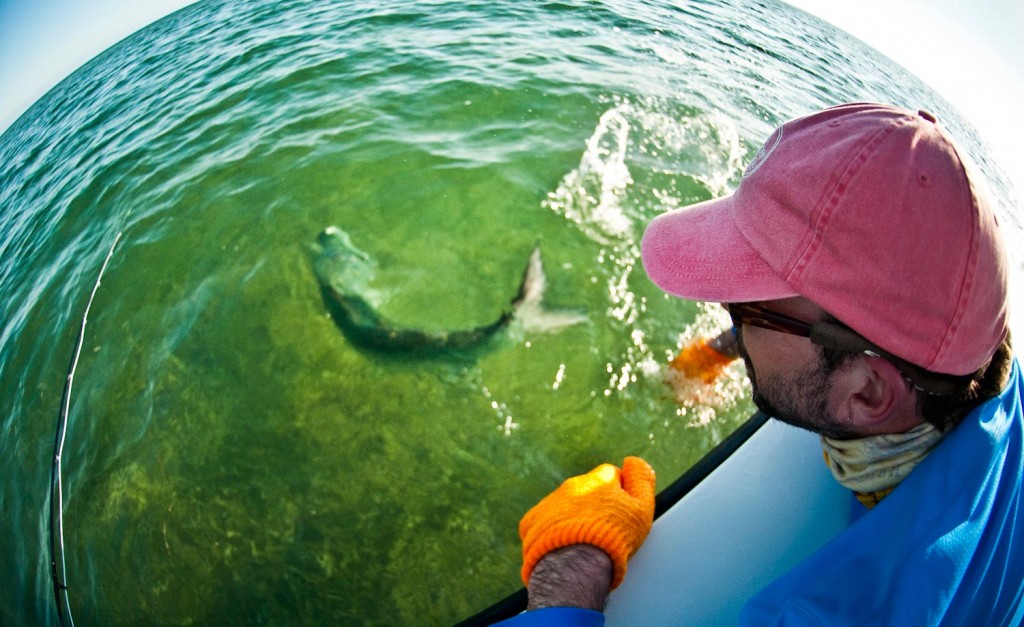
IT’S HARD TO OVERSTATE THE IMPORTANCE OF CONFIDENCE IN FLY FISHING. IT’S OFTEN THE SPECIAL SAUCE ON SUCCESS.
I squint into the sun. My eyes burn from sweat and sun screen. I take a few deep breaths and puff them back out. I stretch my neck side to side, it pops and cracks. I close my eyes for a second, though I know I shouldn’t, I squeeze the cork in my hand and try to slow my heart rate. I open my eyes and I see an army of tarpon. I am loosing my cool.
There must be fifty or sixty fish in this school and plenty of them are a hundred pounds or better. I’ve seen it before but it’s a sight you never get used to. You can easily spend a whole day on a flats boat staring at the water without seeing a fish. I’ve done that too. Moments like this have to be savored and at first I was doing a pretty good job of it but now things are getting weird.
Normally in salt water fly fishing the presentation is what matters. That’s not to say that you don’t need the right fly but it’s not generally like fishing to a educated brown trout who’s only eating the females among the emerging mayflies. Not generally, but this afternoon is different. These fish are being really picky. Normally, you get a shot at a fish and it’s either interested, or it’s not and you are left to wonder why or just assume that fish isn’t eating and move on looking for the next fish. You don’t get the luxury of sitting there and sorting it out. This afternoon we are sitting in the midst of a huge school of tarpon, who are clearly eating all around us, and I have made a dozen good presentations, each to be met with a follow and a refusal. It feels oddly like trout fishing. My buddy Joel Dickey is working thru every fly in his box trying to put me on a fish while we watch tarpon busting the surface all around us. These fish are keyed in on something and we are trying to match the hatch.
It’s hard to overstate the importance of confidence in fly fishing. It’s often the special sauce on success. The thing that gives one angler the hot rod while his buddy fishes the same fly and goes fish-less. I felt real confident when we rolled up on these fish. How could you not? A school of fifty feeding fish, surely you’re going to get one, right? But with each nerve-racking follow and heart breaking refusal my confidence is eroding. My presentations are getting rushed, my casts becoming less and less accurate, my
Read More »7 Tips for fishing from a SUP
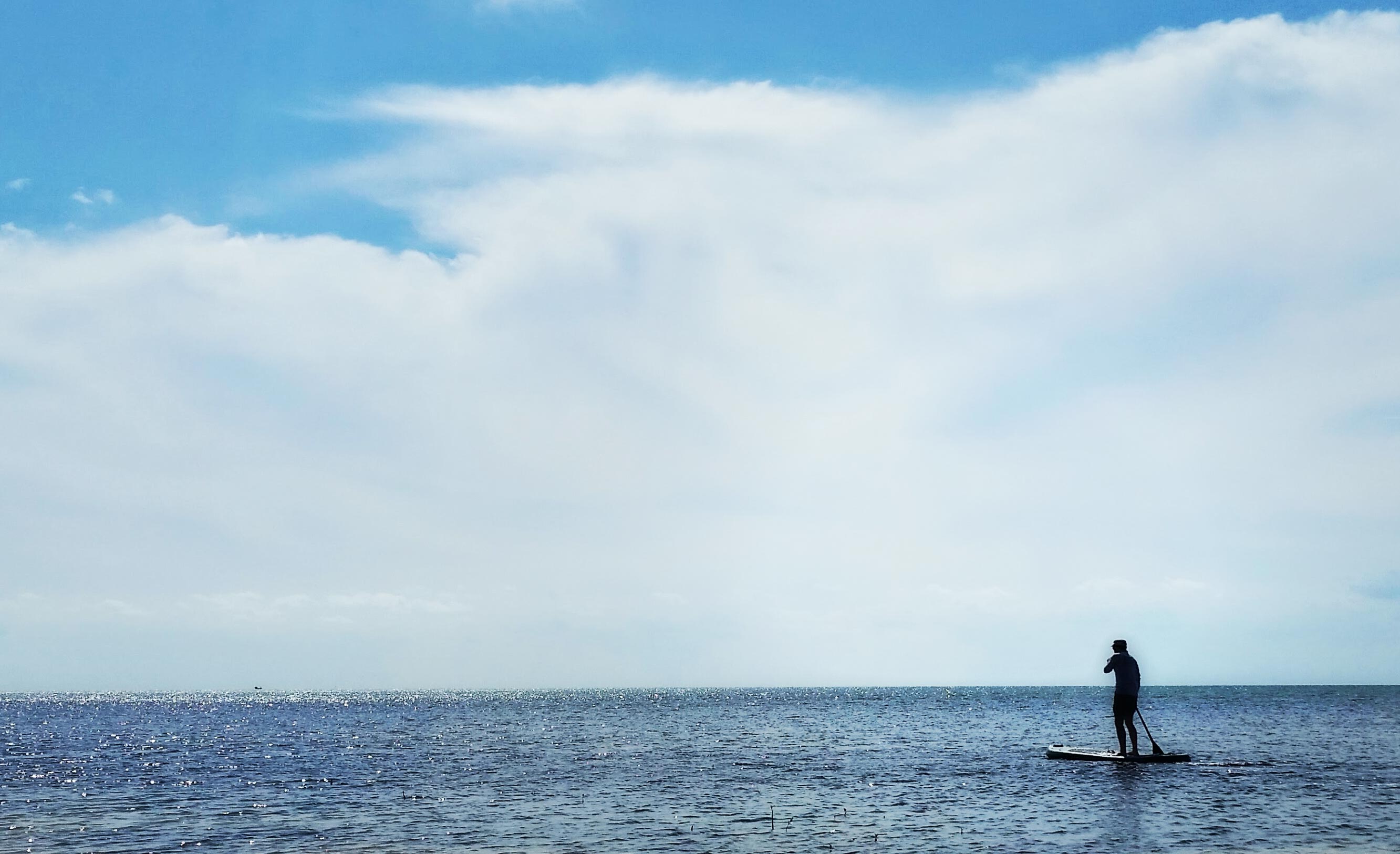
By Ethan Smith
Fishing from a Stand Up Paddleboard can be daunting for the uninitiated. Here are 7 tips to get you up and fishing.
1. Wind
Always think about wind in advance and use it in your favor. No matter what body of water you are fishing, wind will be a factor, especially flats fishing. If you are working against it, It can cause headaches on a Stand Up Paddle Board if you don’t think ahead. Do your best to find spots where you can paddle out and use the wind to float your back along likely looking holding spots you can pick apart. The wind WILL blow you around, so why not use it to your advantage?
2. Don’t be afraid to wade
Fishing from a SUP is fun and exciting, but if you are in a spot with a hard enough bottom to wade, do that. Even in waist-deep water, your chances of landing that trophy fish go up if you are off your board. Don’t be a hero, getting off the board decreases the numbers of variables involved in fighting that fish. It’s easy to just jump off your board, leash it to your waist and wade fish for a bit. Then jump back on your board to move across the channel to a new spot.
3. Keep it simple
Keeping your terminal tackle rig simple on a SUP reduces variables, too. Stick with tried and true attractor patterns on a simple leader. Keep the flies mid- to small-sized and easy to cast, Christmas island Specials or Clouser Deep Minnows are my go-to saltwater patterns and they produce fish and cast easy in smaller sizes. Doing goofy open looped casts with deep diving monstrous flies just isn’t as easy on SUP, so keep it simple and small.
4. Don’t expect to
Read More »Fishing Mud Lines For Big Fish

By: Garner Reid
MUD LINES ARE EXCELLENT PLACES FOR FISH TO HIDE.
I split my guiding year in half, targeting trout from fall to spring and the rest of the year pursuing summer run striped bass in my local river systems. River run stripers offer their own unique set of challenges for the angler, and definitely for the guide.
When someone gets in my boat for a day of striper fishing, one of the first things I try to explain is where these fish like to hold. I tell them to start out like they are streamer fishing for a big brown trout. When someone is pursuing a new species of fish, like stripers in a river, finding that common thread is the key to angling success.
Just the other week I had the pleasure of guiding a new client who was quite an accomplished angler. Having caught many fish in all the exotic locations that are on my personal bucket list. As we floated down the river it quickly became evident this guy knew how to fish. He was ripping big streamers accurately into all the nasty stuff that a big fish ought to hold in.
This was producing a few nice schoolie sized stripes but nothing huge. Halfway through our float we approached a small feeder creek quartering in at a 45 degree angle to the left of the boat. Heavy rains the night before had the creek dumping chocolate milk into the river. Typically not what a fly fisherman likes to see.
The muddy creek water was thick like oil, being pushed up against the clean water by the current, which carried a defined wall of muddy water down the left side of the river for hundreds of yards.
I rowed the boat into position perpendicular to the creek mouth and dropped anchor, told the guy to make a big cast across the creek mouth and let his fly sink, followed with an aggressive retrieve. A few strips later
The Salt Water Quick Cast
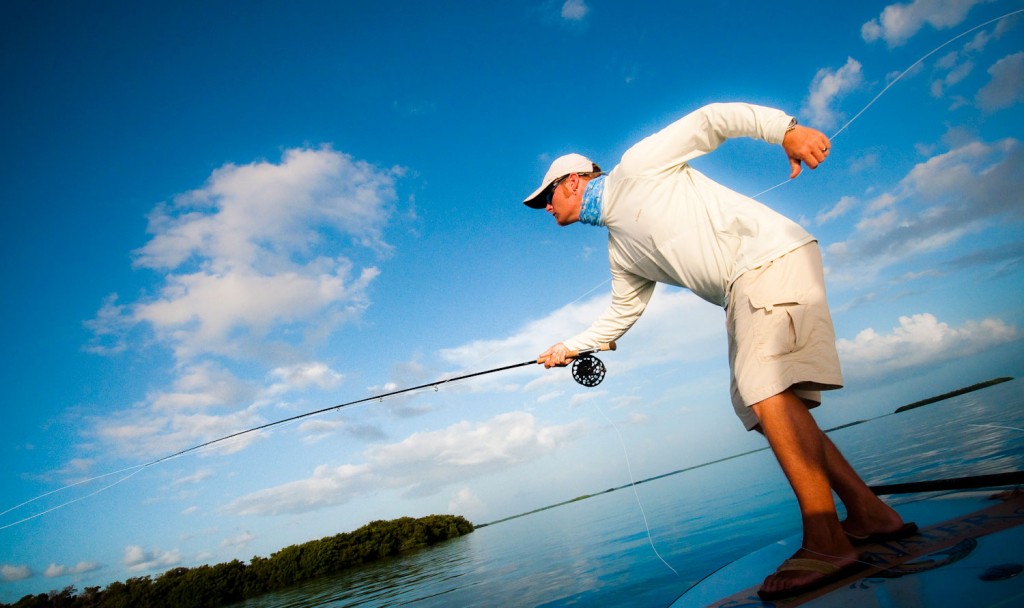
One of the most crucial skills in salt water fly fishing is shooting line.
Everything happens quickly on the flats and the angler who can put his fly on a fish sixty feet from the boat with only two false casts will have a distinct advantage.
It’s important to get the fly to the fish in a hurry but that’s not the whole story. In salt water the most effective presentation is one where the angler shoots line on the delivery. This keeps the fly line from spooking the fish during false casting, which is so important on calm days, and also helps in making a soft presentation. Because the tension from the line hand is released during the delivery the energy of the heavy salt water line dissipates much quicker. No big splash right in front of the fish when the fly lands.
To master the quick cast you will need a few skills in your bag. You must have an efficient double haul to generate the necessary line speed. You also must develop an aggressive back cast so you can shoot line behind you as well. Once you’ve mastered these techniques you’re ready to put your quick cast to work and you’ll catch a lot more salt water fish.
Here’s Capt. Joel Dickey to show you how it’s done.
Read More »A Humbling day on the White River
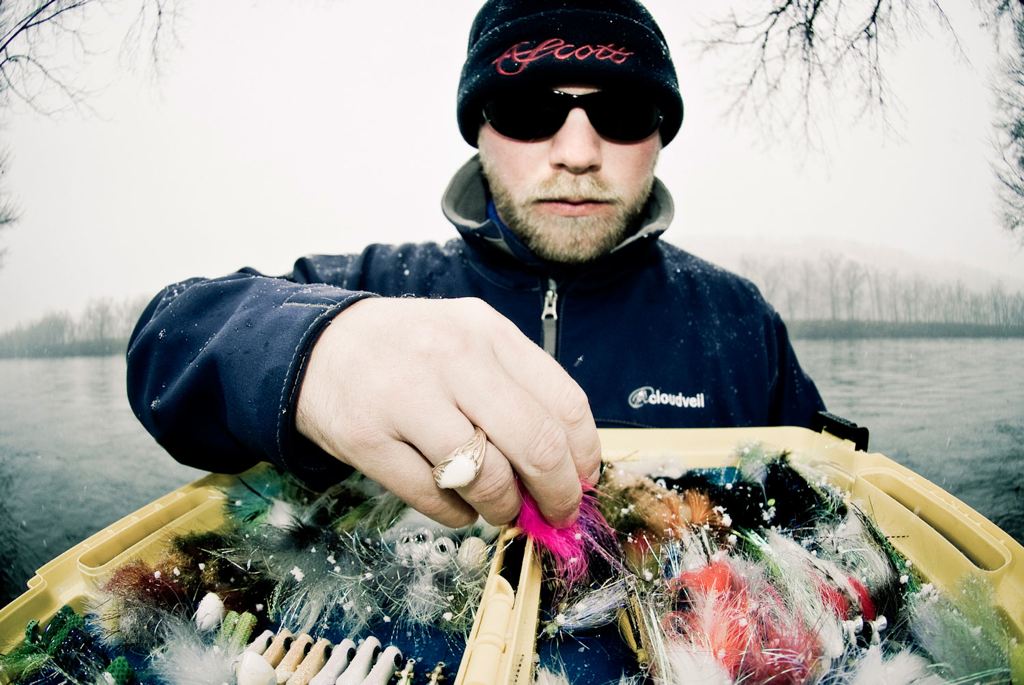
IT’S 4:00AM AND MY ADRENALINE HAS ME AWAKE WAY AHEAD OF THE ALARM CLOCK JUST LIKE THE FIRST TIME MY DAD TOOK ME HUNTING WHEN I WAS A KID.
As I gaze onto the silhouette of the White River I hear the resident trout in the river ambushing baitfish and stockers in the moon light. By the sound of the loud thrashing of the water I can tell it’s the sound of trophy trout on the feed. I’ve booked legendary fly fishing guide, Davy Wotton who’s been guiding on the White River for over twelve years. Davy is well known in the fly fishing industry for his SLF Dubbing, extensive fly fishing videos and long standing conservation efforts.There’s no doubt in my mind I’ll be in good hands with his local expertise. I’ve got my Scott S4 8 weight rod rigged up with my sinking line, and I’ve packed my Cliff Outdoors streamer box that’s filled to the max with my freshly tied up streamer creations.
My goal for the trip is to bring a Brown Trout to the net measuring over thirty inches. This feat will be no small task, but my hopes are high knowing there’s no better river in the lower 48 states to reach a goal of this caliber. The Arkansas DNR have shocked up multiple forty plus pound brown trout over the years during their surveys, and they say it’s just a matter of time until the White River produces the next world record. After a quick introduction with Davy Wotton we launched the boat and headed up river to Bull Shoals Dam where we initiated our first drift for the day. From the Bull Shoals Dam down to the Bull Shoals State Park line, the White River is a designated trophy trout section with special regulations.
Shortly after beginning our first drift we began seeing thousands of shad floating down the river. As deep as I could peer into the depths with my polarized sunglasses, I could see shad in every foot of the water column. There must have been thousands floating at any given moment. Now, you’d think this would be great for fishing, right? Here’s the problem,
Read More »Want More Distance? Then Don’t Cast To The Fish!
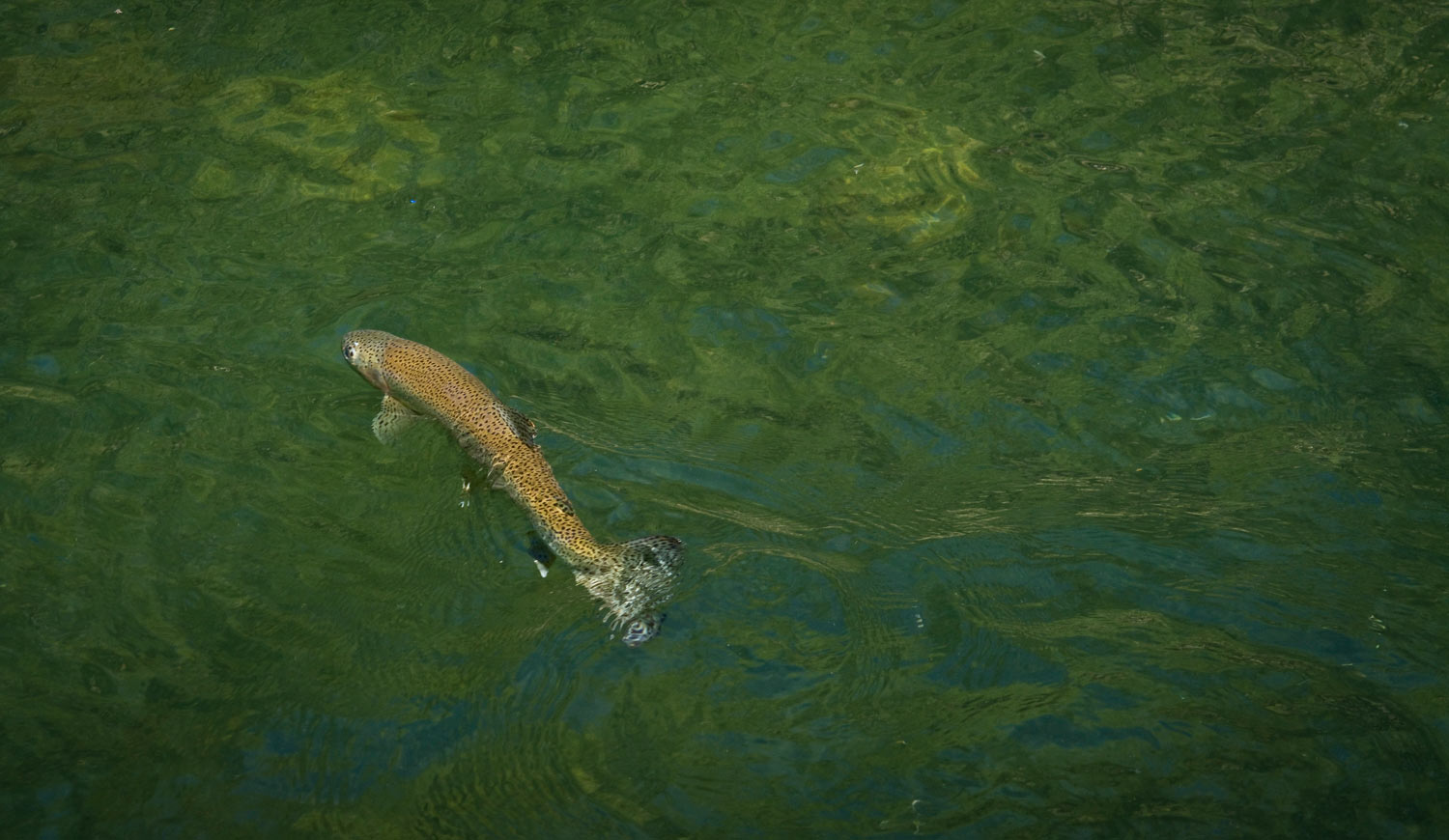
By Kyle Wilkinson
Our shop offers free casting lessons once a month at a local park in town. These events are always a great way to interact with existing customers, attract new ones, and simply enjoy being outside in the great state of Colorado.
We had our first one of these events earlier this week and I had the opportunity to work with anglers of a variety of skill levels. We had a great time and I’ll never tire of seeing the excitement on an angler’s face when he sees his casts looking better than ever. Being able to help them connect the dots on what they’re doing wrong and why is always extremely rewarding.
That said, regardless of the angler’s skill level, one common mistake continued to be made by nearly everyone from the complete novice to the more advanced casters. I recently wrote about “My Number One Casting Tip” on this site a few weeks back. And while that is still a very valuable lesson (that we definitely implemented that night), here is another big mistake I continually see anglers make. The good news is, this is extremely simple to adjust and I’m confident it will make you a better caster.
Casting TO The Fish: The fish are in the water. I get that. I also get that we need our flies to get to the fish in order to catch them. Where this casting flaw comes into play then is when an angler makes two or three perfect false casts with loops so tight you could barely squeeze a toothpick through them and then when it’s time to set the cast down- BAM- the rod trip drops on the forward cast to point right at the target, the loop opens up so big you could drive a car through it, and all the power of the cast is lost. Oftentimes it may not even totally lie out or turn over the fly. Another quick way to tell if you’re dropping the rod tip a little too quickly is if the fly line is hitting the water (or grass in our situation) before the fly. It may even look like the fly line is “rolling out” on the surface of the water towards your intended target. If you’ve ever experienced the feeling of “why did my false casts feel so good and then my final cast had no power when I went to set it down?” this is likely the reason.
So, now on to the part of how to fix this casting flaw.
Read More »Fly Fishing: Respect Thy Tarpon Guide
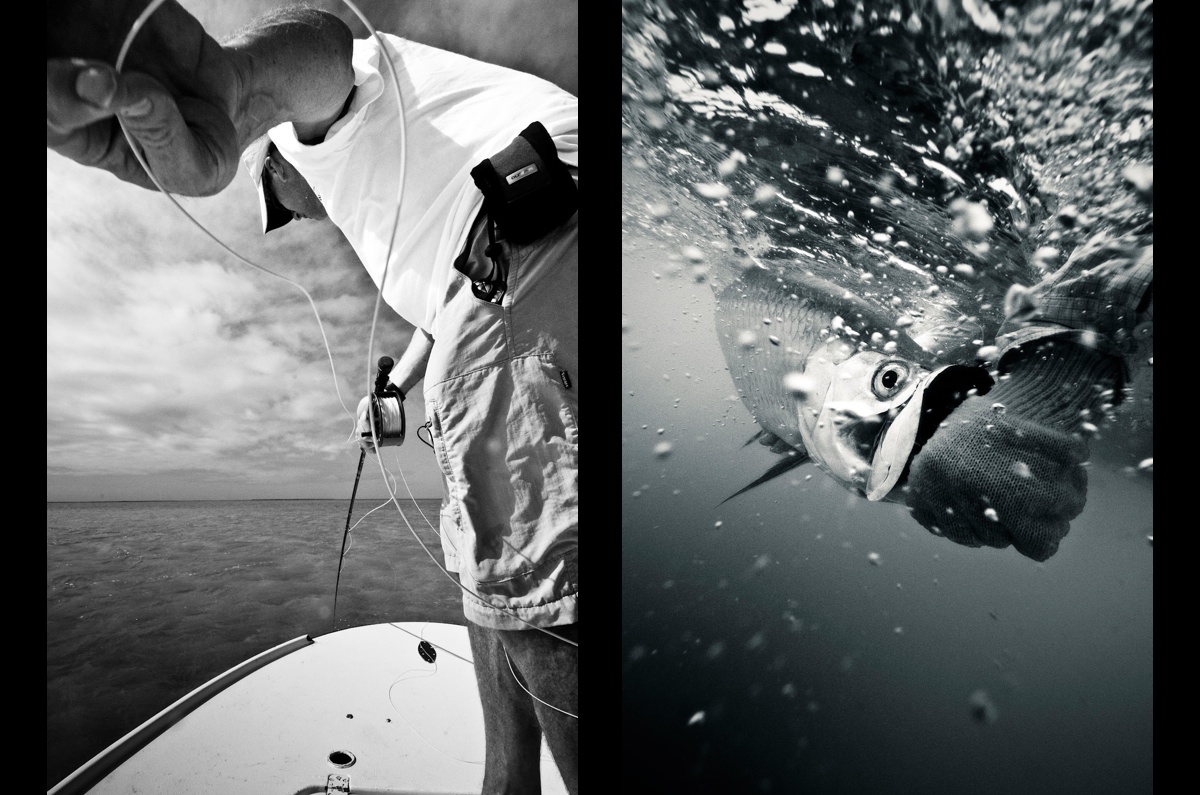
I respect tarpon guides a great deal. As a trout guide, I run into many of the same struggles they do on the water, but tarpon guides have to deal with managing them at the extreme level. They spend their days on the water guiding in some of the most demanding and technical fly fishing conditions on the planet, and to make things worse, many of their clients have never experienced the saltwater fishing conditions before in their life. Getting the job done, day in and day out, is rarely easy for a tarpon guide. I imagine there’s plenty of silent prayers being made on those poling platforms, begging for a starving fish to show itself at just the right angle, and that a good presentation follows.
Friends that guide for tarpon tell me of occasional periods where the skunk doesn’t leave the boat for days at a time. Hookups that are short lived, are the only thing that keep them sane and focused on the prize. It’s not that they aren’t spotting fish and getting plenty of opportunities during the day. Most of the time, their hands are clean and the skunk falls on the operators standing on the bow. It’s hard to hit your targets if you haven’t taken the time to sight-in your fly rod before you begin the hunt (pre-trip casting preparation). Consequently, a large percentage of the fish catching opportunities witnessed by tarpon guides fizzle out before they can materialize, from presentations missing their intended targets. And don’t get me started on the unstable emotions that plague newcomers to chasing tarpon on the fly. That’s a whole-nother can of worms. I’ve been on the bow many times, where I completely fell apart after locking eyes with a 100+ pound poon.
Read More »The Simms Freestone Backpack: Review
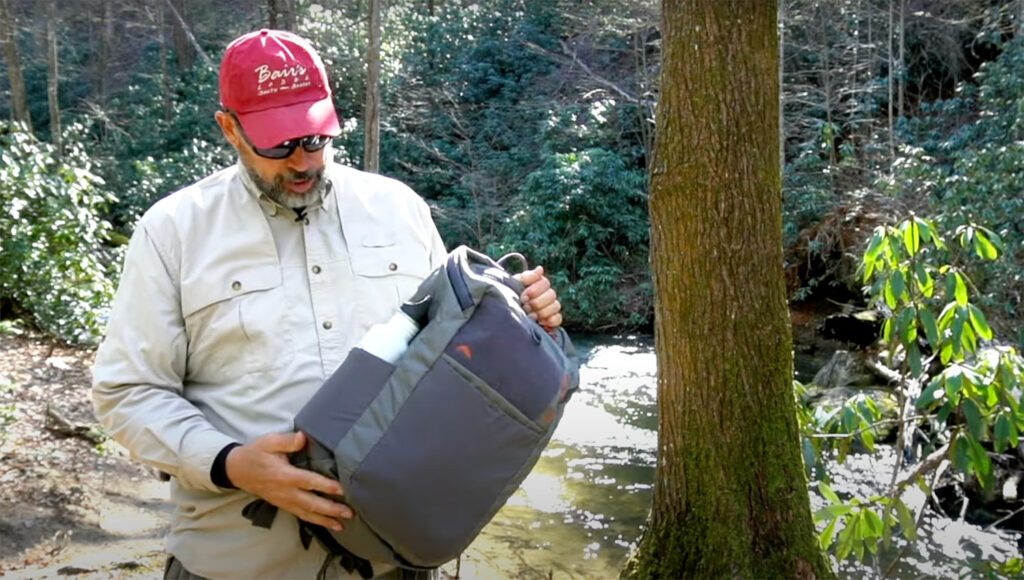
By Louis Cahill Looking for a great fly fishing backpack? The Simms Freestone Backpack is a great choice. Light weight but durable, easy to carry and really versatile this pack is perfect for hike in fishing and even a light overnight. Loaded with features and designed for either fishing or hiking, at $159 the Freestone Backpack delivers a lot of value. watch this video review for all the details on the Simms Freestone Backpack! Gink & Gasoline www.ginkandgasoline.com hookups@ginkandgasoline.com Sign Up For Our Weekly Newsletter!
Read More »Fly Fishing Stillwater by Gareth Jones
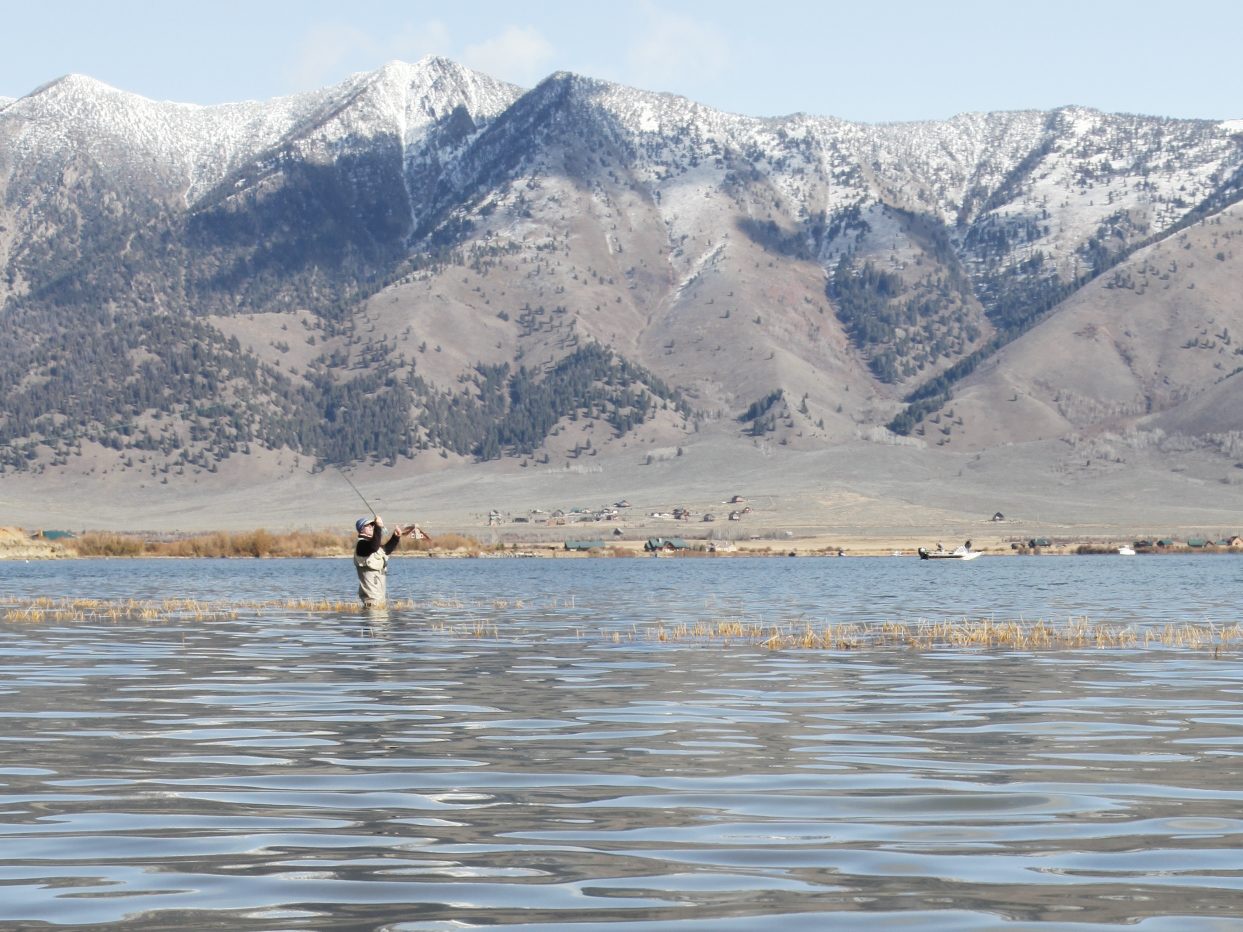
THE OTHER HENRY’S
Mention to any flyfisher that you’re heading for Island Park, Idaho and they’ll immediately think you’ll be packing a selection of CDC and biot creations intended to deceive the wonderfully selective leviathans of the Henry’s Fork.
However, my latest visit to see Rene Harrop and the boys at the TroutHunter, was all about fly fishing the incredible Stillwater’s of the region, and more specifically, Henry’s Lake. The plan was to see how fishing UK flies and techniques would work on the great Cutthroat and Hybrids that inhabit the lake. This wasn’t the first time I fished the lake. I’d visited it ten years earlier, and I remembered enjoying some wonderful sport-fishing from a float tube, fishing damsels through the gaps in the summer weeds. Needless to say, I was fairly confident that some of my own fly patterns and techniques would produce on this trip, and I was excited to hit the water.
Read More »Small Stream Structure- Woody Debris and Other External Features
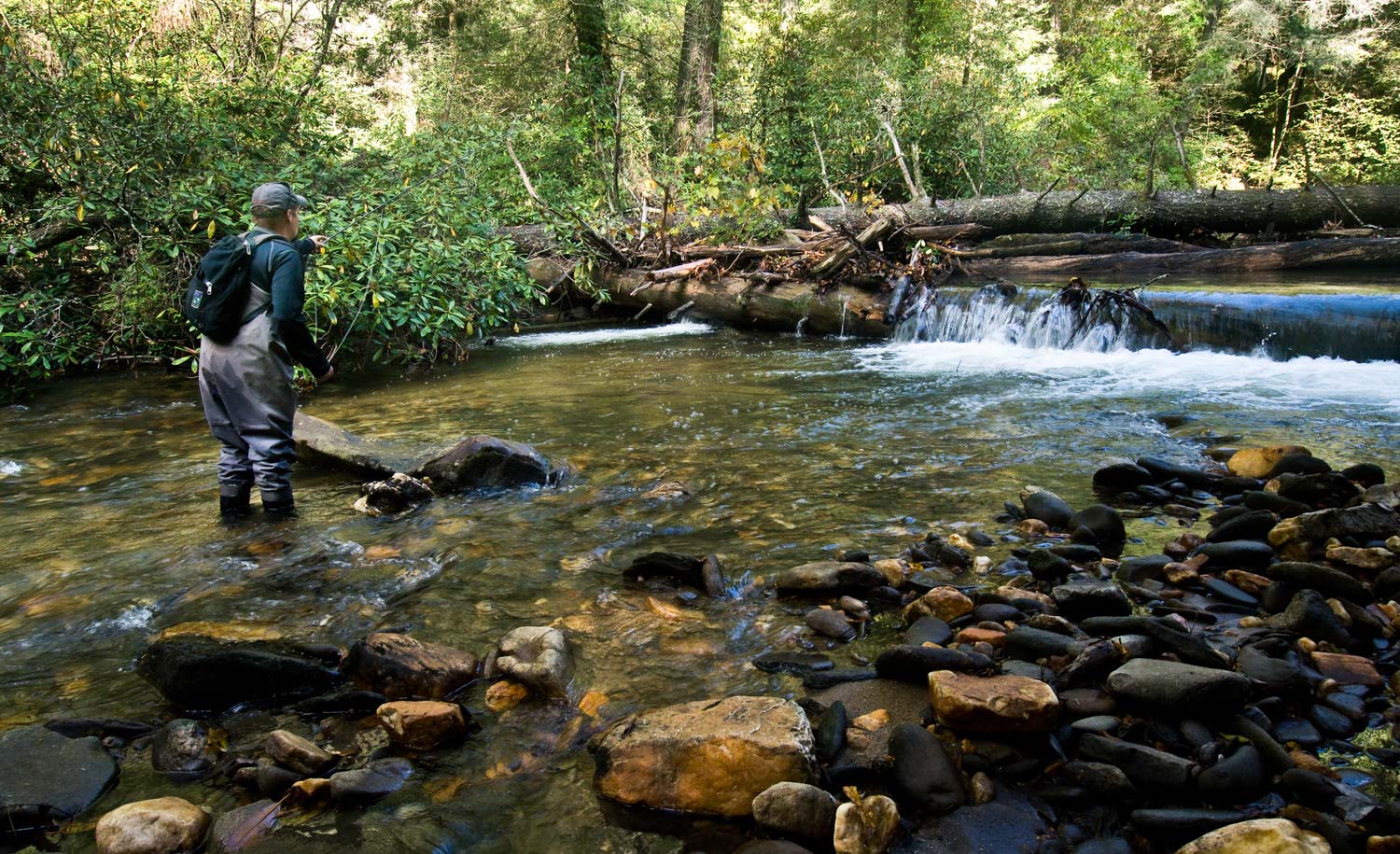
By Jason Tucker
Wood is good!
In the two previous installments I’ve discussed fluvial stream structures (holes, runs etc.) and substrate types. If a stream were a house, then the substrate would be the foundation and floors, fluvial structures would be the walls and rooms, and the woody debris and other structure would be the cabinets and furniture. If that helps. Understanding woody debris, and how it relates to the other features is key to your fishing success. The geography of where you’re fishing greatly affects its importance and utility to the fish. In Appalachian mountain streams a lot of woody debris simply gets swept away or pushed to the margins in slack water; in northern trout streams it is very important.
Woody debris. Trout use woody debris for structure and cover. It also provides homes and food for a lot of aquatic insects and is part of the basis for life in a stream. Don’t underestimate the power of woody debris to create fishing situations. Logs lodge across the currents and create pour-overs. Those pour-overs then create holes. Conversely, logs can lodge higher in the water column, forcing the current down and routing out the bottom. That also funnels food into the spot, a double whammy of food and shelter.
Brush piles and log jams. Brush piles and log jams are trout hotels and provide vital escape cover from predators. As far as fishing goes they are some of the least interesting features in a stream to me. Look for fish to move out from them to feed on hatching insects. You can often tempt hiding fish into striking a streamer around the edges, and look for trout feeding on surface flies right on the leading edge where the current is sweeping insects into the wood. It’s a tricky spot to fish, and even trickier if you hook up. Be ready to put the cork to any fish you hook up on near wood.
Individual logs. Here I’m talking about logs parallel to the current. Trout love these, especially if it’s slightly undercut or has a deeper channel next to it, whether it is fully submerged or breaks the surface. Try to spot submerged logs far enough away without disturbing fish. They’re great places for picking off individual fish. Often current is funneling food to the fish on and below the surface.
Man-made structures. No discussion of wood would be complete without discussing man-made stream improvements built by state agencies and conservation groups. Some of these are dynamite, some are duds. I’ve caught good fish from structures only to return to find the fish quit using them because the water level dropped. On some of the small streams I fish the nature of structures has changed. Instead of building hotels for the fish they’ve switched to placing trees and brush in the current to deepen the channel or change the current direction. Narrow and deep will hold more fish than wide and shallow. Fish will still associate with the structure, so always fish the features of the structure. They vary enough that you’ll have to decipher that. Some days a hopper placed right next to a structure in the current is just the ticket.
Other man-made structures such as docks placed in a stream can likewise be dynamite or duds depending where it is placed in relation to the current, how deep the water is and so on. Landowners tend to place a dock where it is convenient for them to launch watercraft, or provide a good view for quiet meditation. Or drinking. A dock placed in shallow slack water won’t hold much; a dock in the current with good depth can work as a good fish holding structure, either to fish a streamer to, or float a dry fly down the outside edge.
Beaver structure. Beaver dams probably merit a whole chapter on their own. Trout tend to stack up on both sides of a dam. Fish the downstream side as you would any plunge pool/riffle area. Look for the deepest channel coming out of the dam to hold the biggest fish, but don’t ignore smaller chutes. Fish any dark moving water below the dam no matter how small the pocket. The upstream “pool” side of the dam will vary depending on water depth, age of the structure and whether there is structure and food above it. If there’s good current at the dam look for fish
Read More »